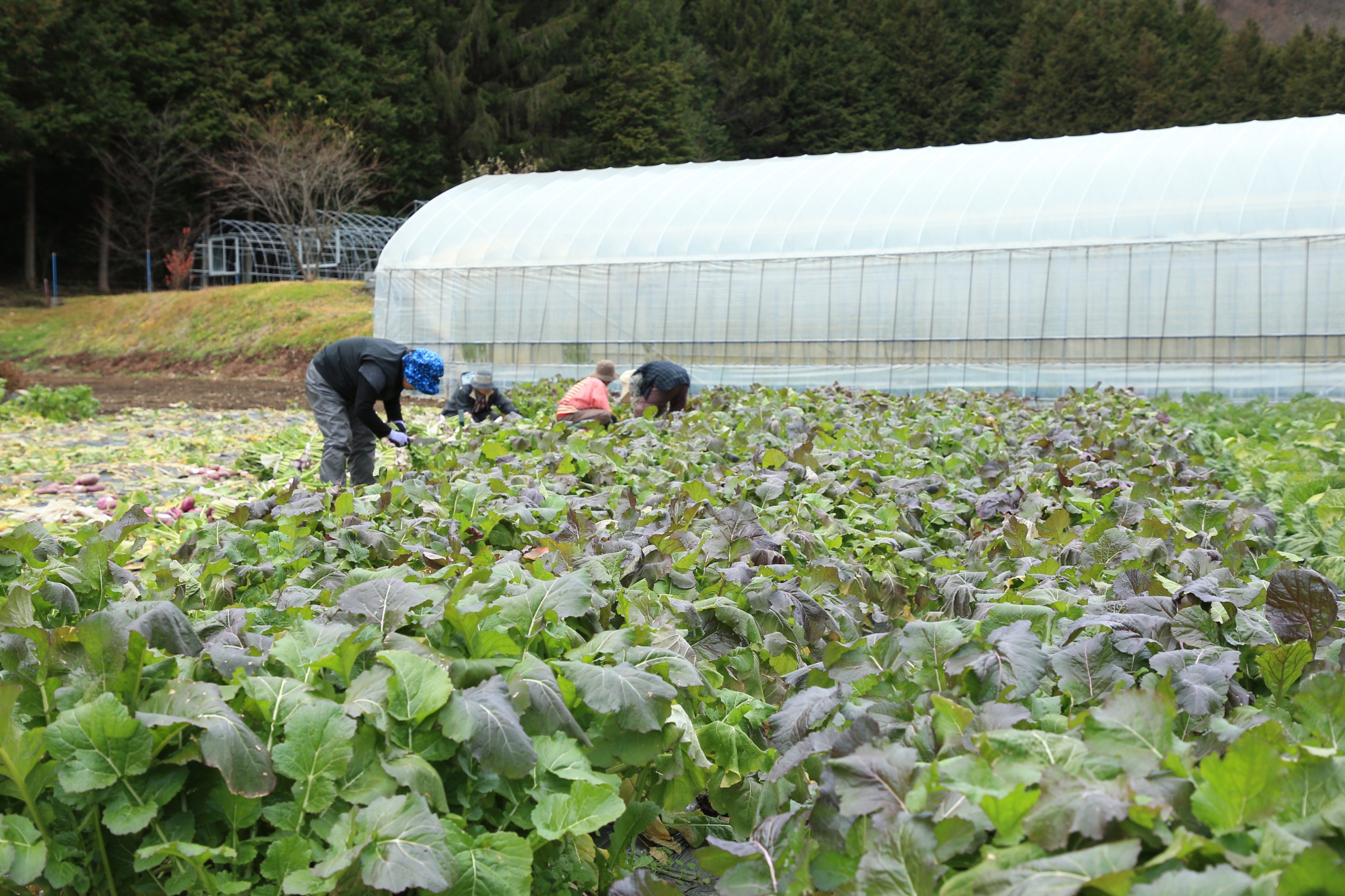
A taste of mother’s hometown cooking Mujinichi
8562-3 Shinkai, Kiso Town, Kiso District, Nagano Prefecture
FOOD TEXTILE STORY vol.4
2023.03.1
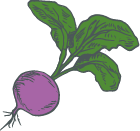
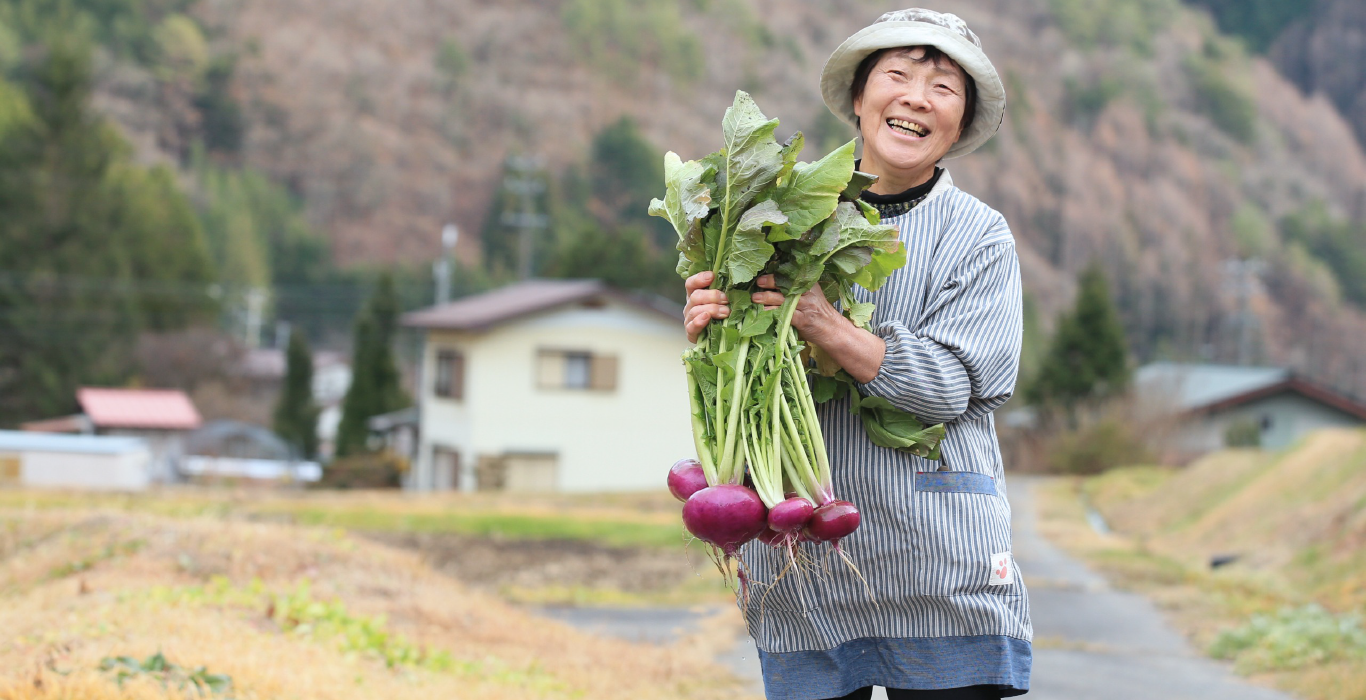
Kiso District, Nagano Prefecture. This area, situated 1000-1300m above sea level, has a cool summer and a harsh winter.
The traditional vegetable grown amid this climate and natural features is red turnip. The main varieties based on location are “Kaita Turnip” and “Otaki Turnip.”
Originally, the main body was eaten as “pickled red turnip,” and “sunki (suguki),” made from parts of the stem, leaves, and upper neck of the vegetable known as hypocotyl, was eaten as a preserved food. In times when salt was a precious commodity, sunki was made without any salt and is a unique pickle made by fermentation with vegetable lactobacillus.
Most households in this area have been eating these pickles for more than 300 years,
but when lactobacillus became the focus of attention around 25 years ago, they became widely known nationwide as a health food.
In 2007, these pickles came to be registered in the “Ark of Taste,” a valuable food heritage designated by Slow Food International Headquarters.
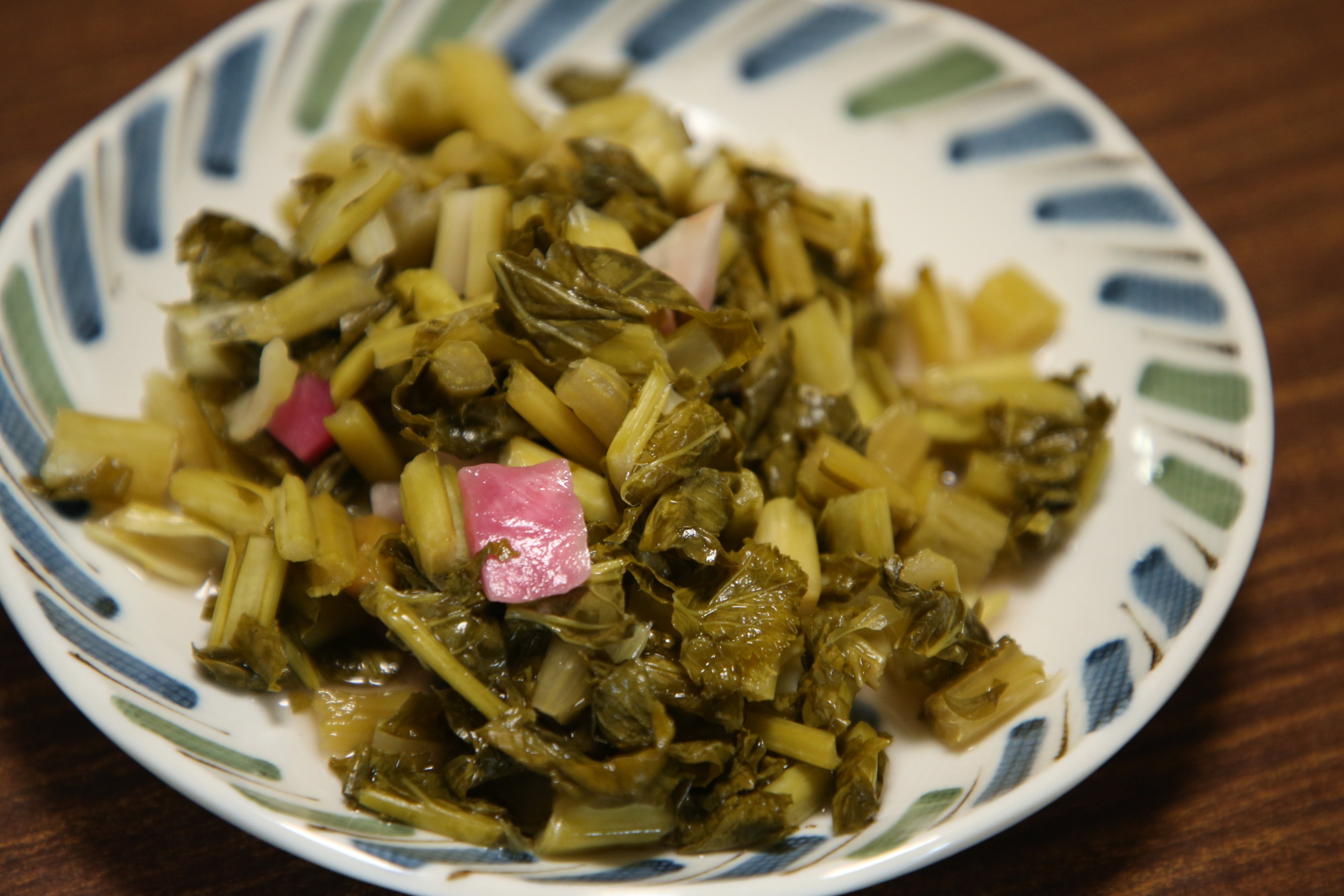
“Vegetables with lactobacillus seem to be unique.
It’s a little acidic and salty even though they do not contain any salt. We use it in our miso soup every day,
“ comments Ms. Noguchi, who runs the farm. She grows Kaita turnip on a vast 20-hectare farm.
She and 4 other workers handle everything from seed planting to harvesting, processing, and sales. Their homemade “pickled red turnip” and “sunki” are sold at nearby “michinoeki (roadside stations).”
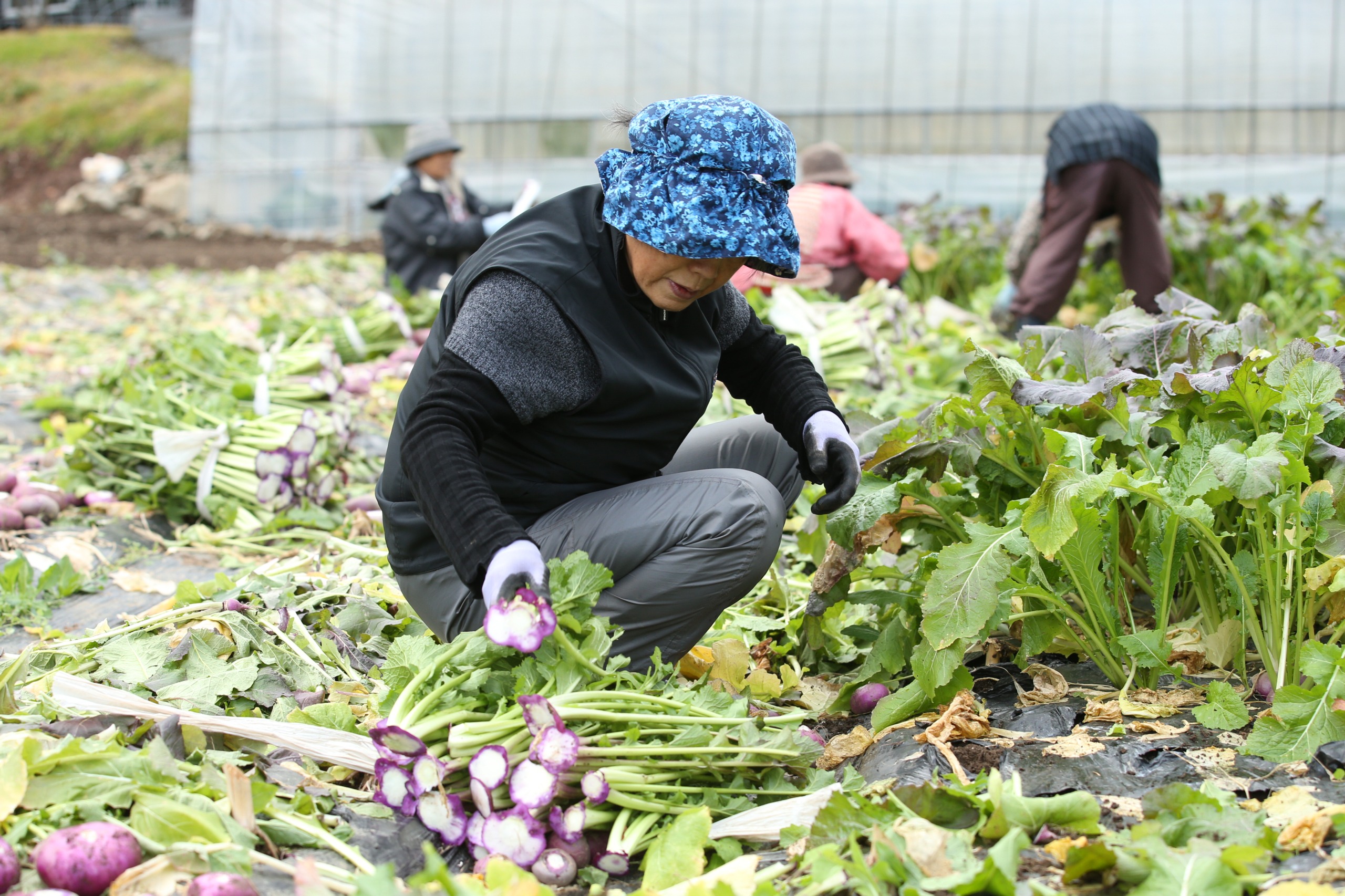
Ms. Noguchi was born and bred in Kiso Town. Her family ran a farm and she grew up eating red turnips.
From the time she was in elementary school, she loved mushroom cultivation and growing vegetables and helped her family.
She also loved caterpillars in the fields and thoroughly enjoyed the time spent on the farm.
She married into a farm within the same Kiso Town and continued to grow red turnips as she had always been doing. Now 71 years old, her skin is still smooth and white, unlike the skin of someone who is out in the field every day. “Maybe it’s because I eat sunki,” she says bashfully with a radiant smile.
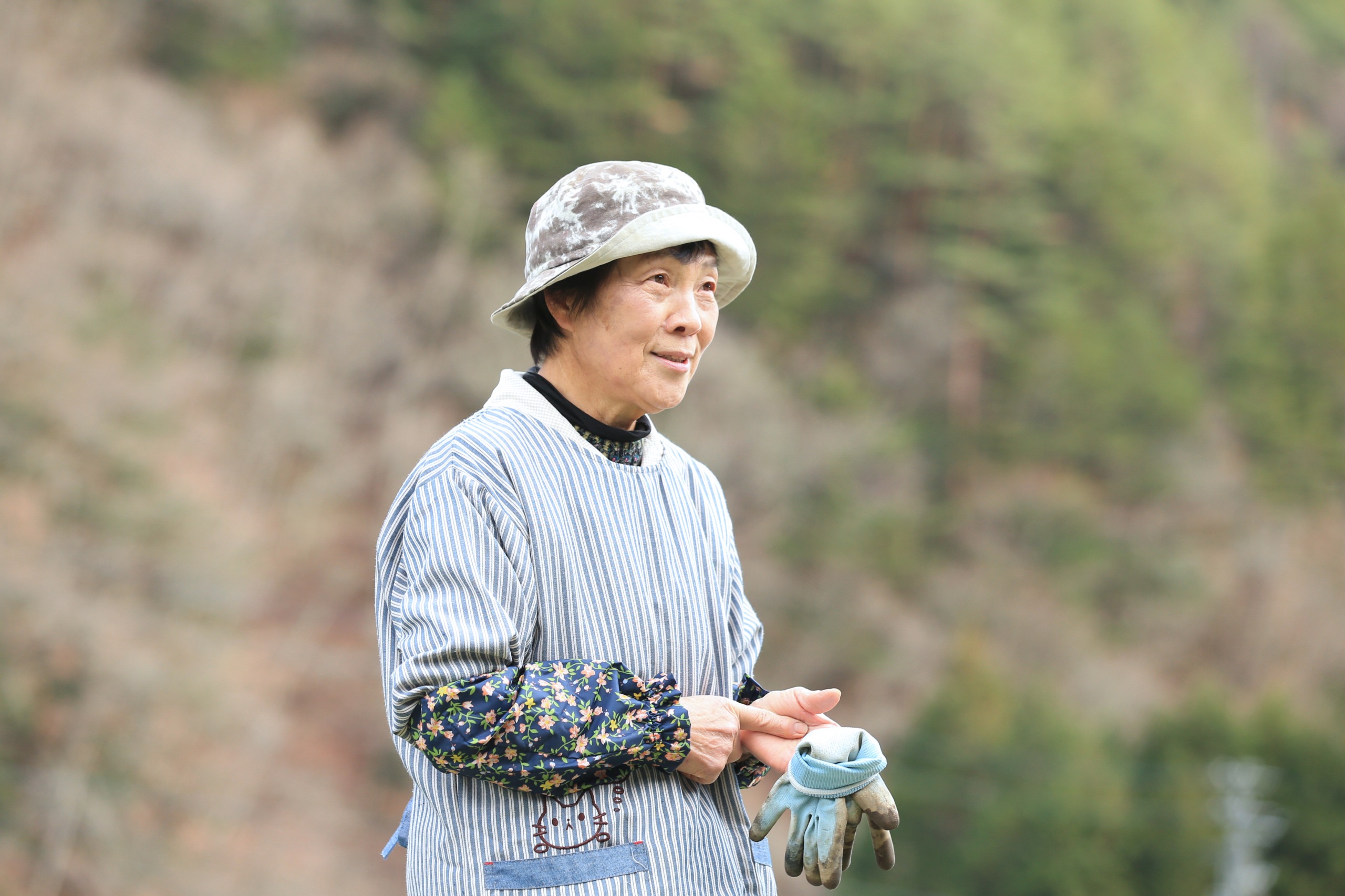
The “red turnip work” is a short-term job and November is the most hectic time.
Seeds are planted at the end of August, thinning is done in September, and harvesting is carried out in November.
Since frosts make the turnips sweet, we wait until then and harvest them all together before snowfall.
On the other hand, the growth period is just 2 months and because it grows during the season when the crop is not infested by insects, it can be raised without the use of pesticides.
This also contributes to its popularity.
“In the first place, red turnips are sturdy and gutsy vegetables,” remarks Ms. Noguchi adoringly.
However, from several years ago, mass disposal of red turnips which are harvested in great quantities has become an issue.
Accompanied by the popularity of sunki, Nagano Prefecture has requested increased production of red turnips. However, only the leaves and stems are used. Ms. Nogouchi and other farmers have been overwhelmed by sunki production that they have no time or energy to deal with the main body of the turnips themselves.
“If you leave them in the field, wild boars and monkeys come and ravage the field. If that happens, the whole field would be ruined. We also make pickled red turnips, but we can’t use them all up. It’s hard, but there’s nothing we can do.
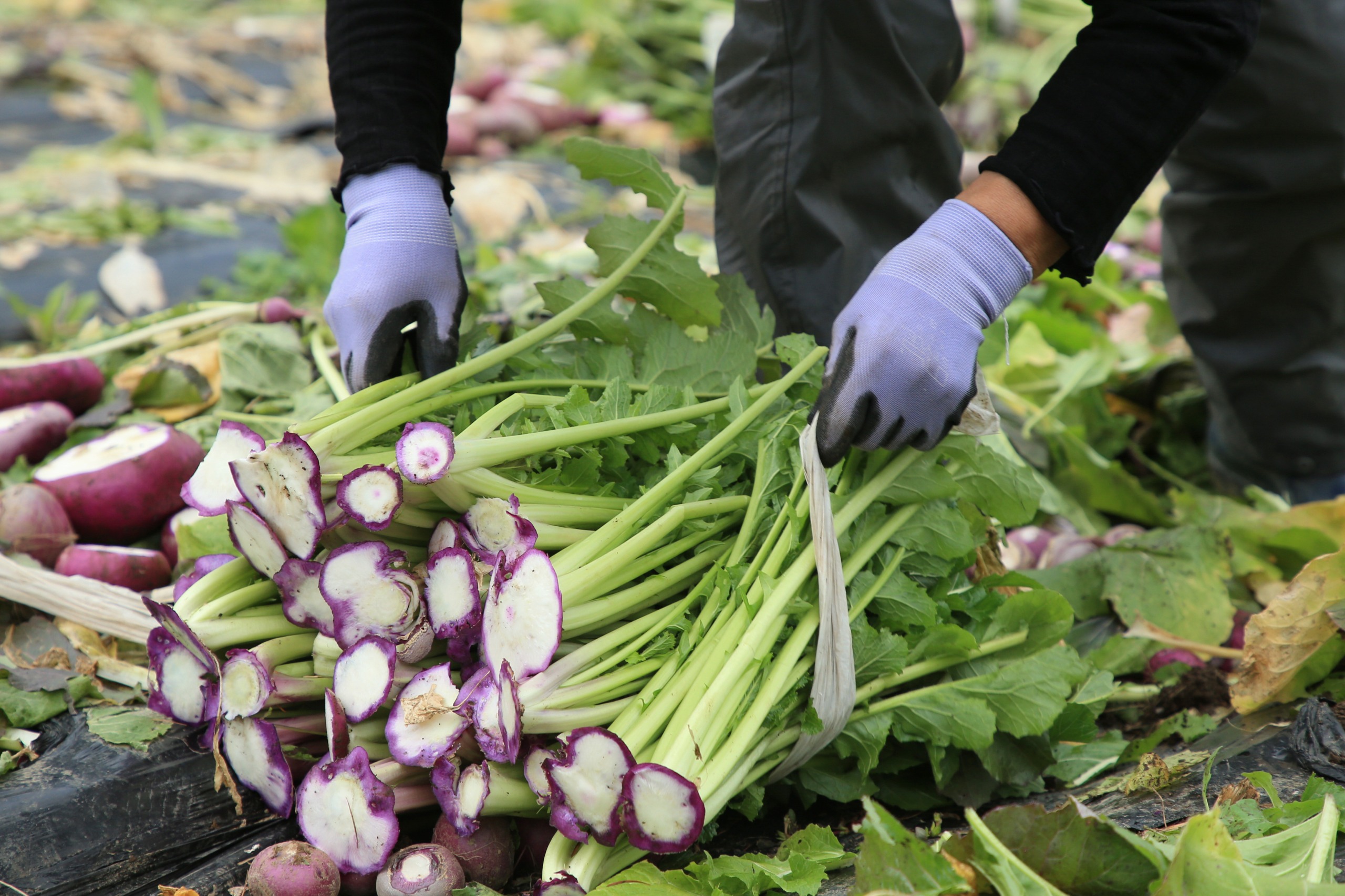
It was Mr. Tanimura, the project leader of FOOD TEXTILE, who heard about Ms. Noguchi’s red turnip farm through a university that does research on lactobacillus.
“Maybe disposed turnips can be used as dye…”
Local farmers including Ms. Noguchi gathered together for a briefing. Project members and Ms. Noguchi imagined that the color produced from the vivid red turnip would be red.
In reality, the dye turned out to be a faded, subtle shade of blue. Everyone was surprised.
Since the color blue was difficult to produce up to that point, it was a pleasant discovery.
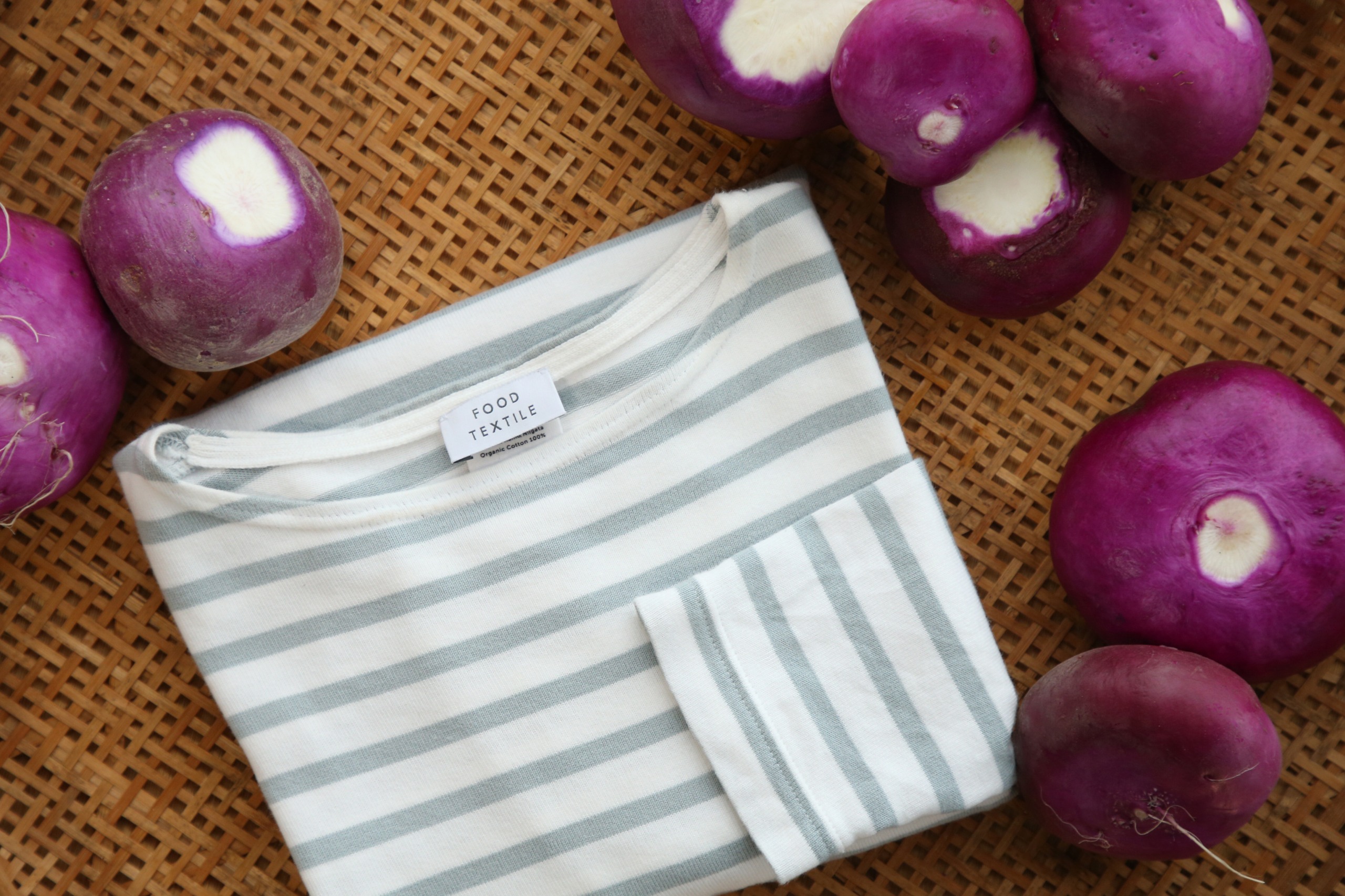
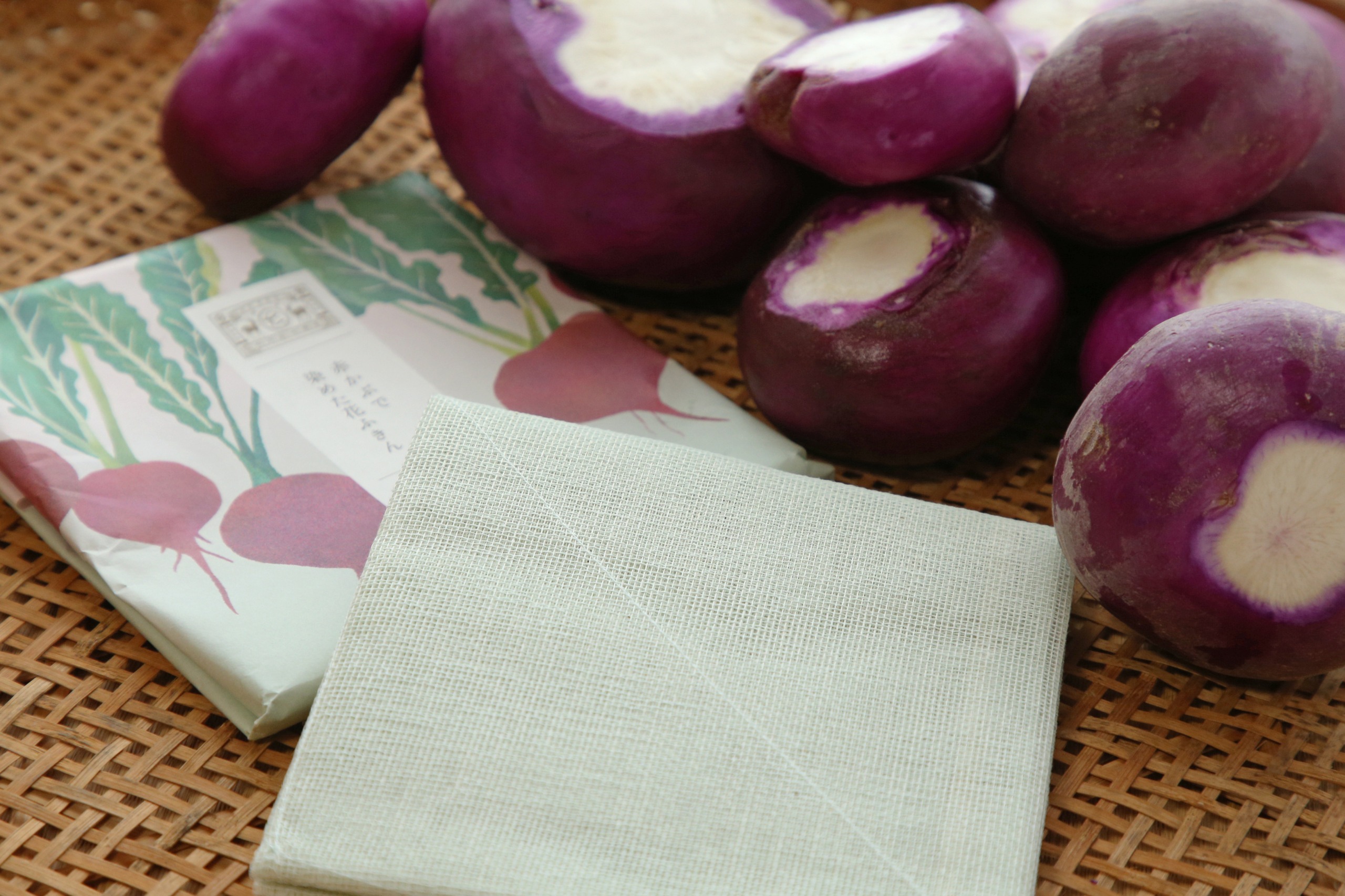
“Little did we imagine that turnips could be used as dye! We have experience with plant dye, but red turnip is what we are producing with our own hands from the seed planting stage.
We are happy that it can be completely used up. “Mottainai (wasteful)” is a normal concept that we’ve held onto in our daily lives from long ago.”
4 years have now passed since Ms. Noguchi has been shipping the main body of turnips to Toyoshima.
Ms. Noguchi thought that shipping the turnip in the peeled form would be easier to handle.
So she has been going the extra mile when shipping the turnips to Toyoshima.
Textile demand has been steady and last year, roughly 300 kg of turnips were purchased.
Since the harvest is only once a year in November, preserving freezers for the project was introduced. Needless to say, since it is a natural dye, it is a challenge to adjust the color each time.
However, Ms. Noguchi can sense the devotion of the project team which has treasured this fateful encounter and which has maintained a sense of mission to keep the project on track.
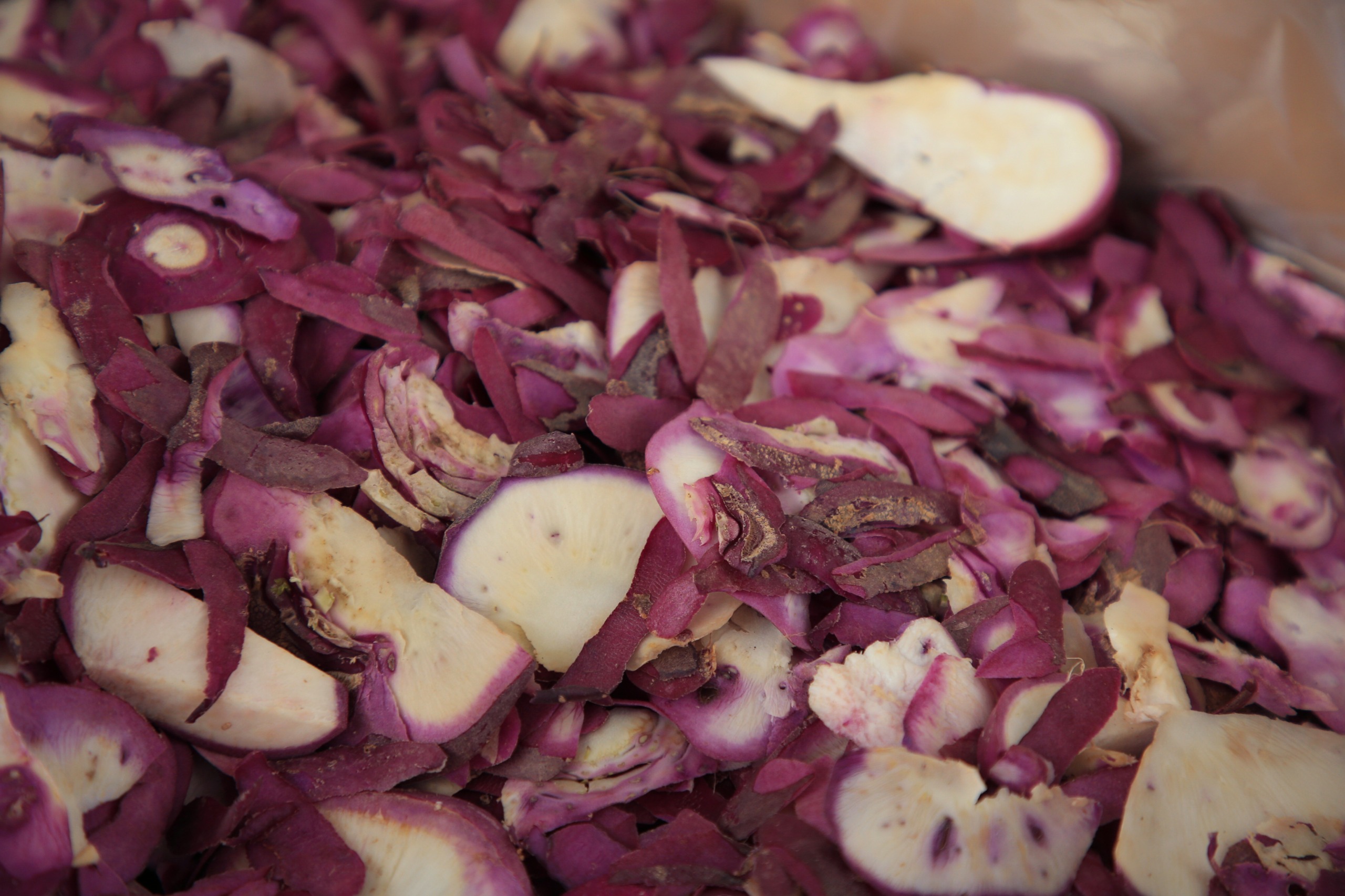
“If everyone thought and acted on making the most of things, our day-to-day lives would improve and become more enriched.
Red turnips are seasonal vegetables and are perishable, so there are various problems such as preservation and coloring.
However, by working with Toyoshima and Co. throughout this cycle, our thinking as farmers has also changed.
I feel that Toyoshima has taught us the value of reexamining things that were “normal” in times past.
As we pack the turnips into boxes and use the fabric dyed with red turnips, we talk among ourselves, saying, ‘It’s once again the season to ship the red turnips.’
It’s nice that this is gradually becoming a normal process. The turnips must be happy too.”
This year also, when the harsh winter is over and canola flowers decorate the mountains of Kaita, seed preparation for the turnips begins.
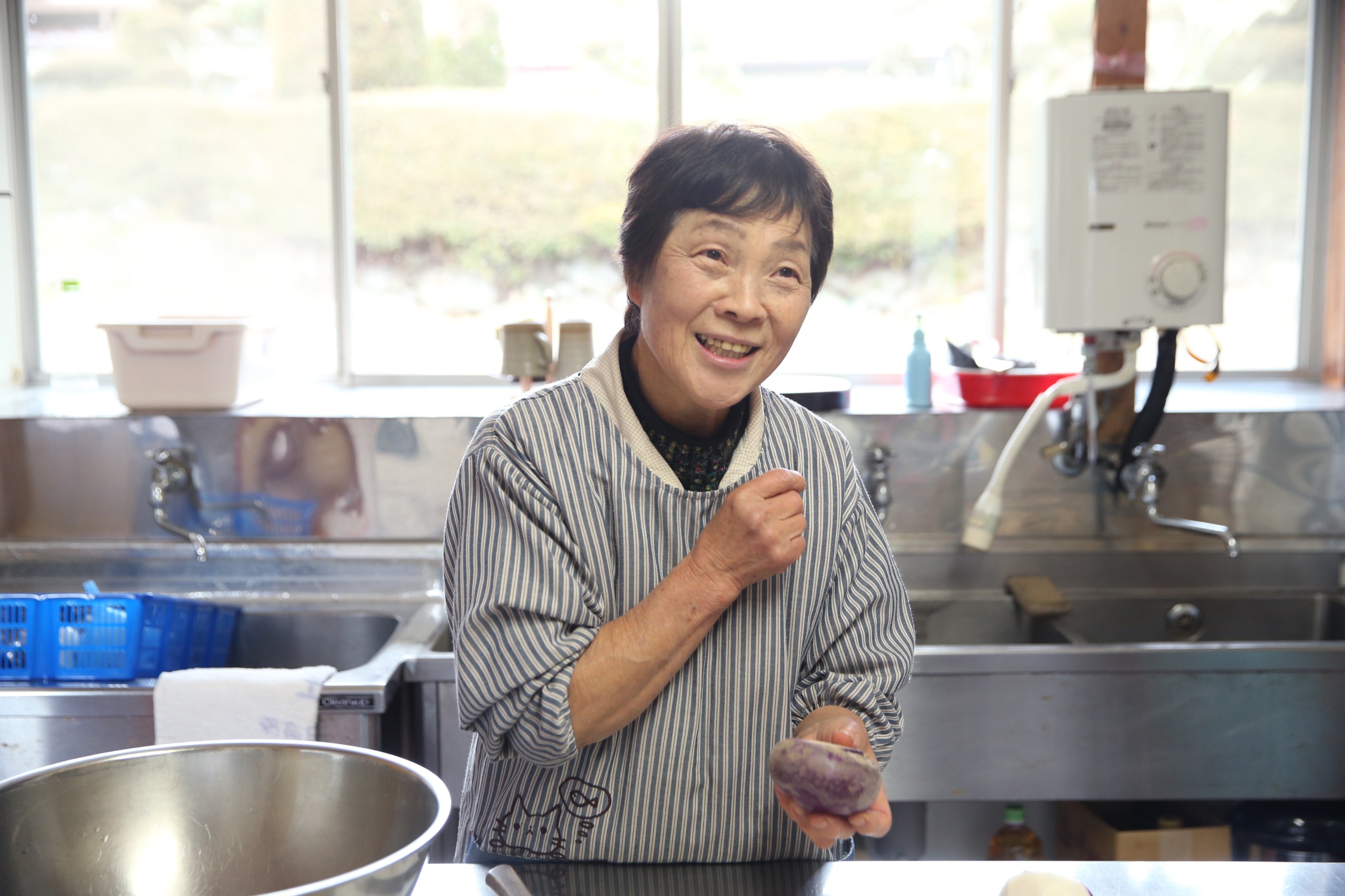
TEXT/ MASHIMO SATOKO
PHOTO/ YASUI RIE

A taste of mother’s hometown cooking Mujinichi
8562-3 Shinkai, Kiso Town, Kiso District, Nagano Prefecture